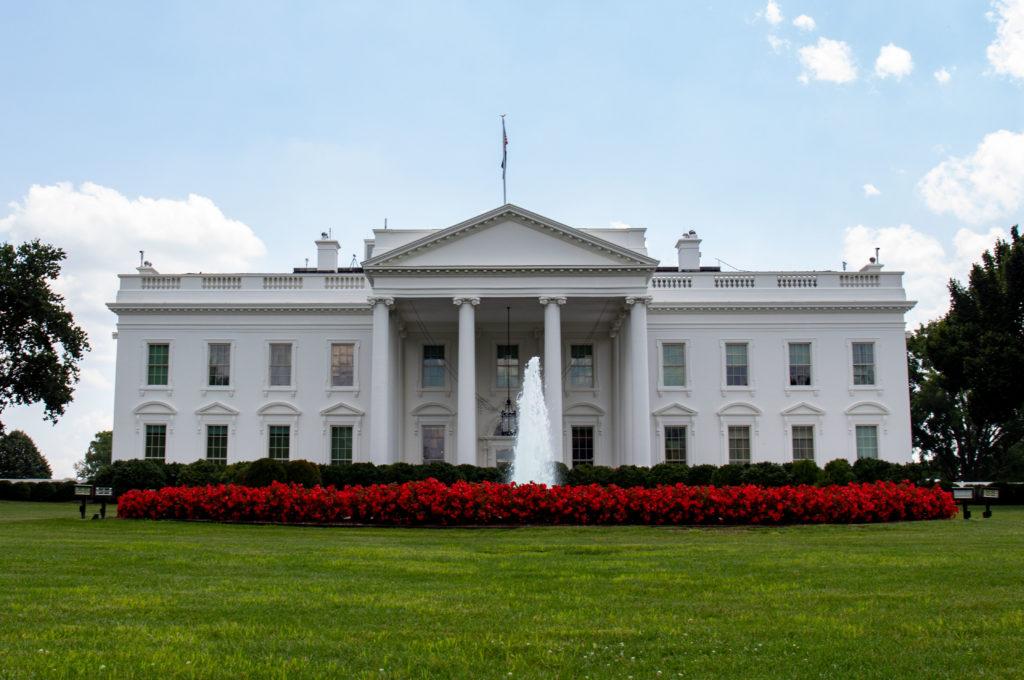
About 40 staff members met in Duques Hall Wednesday evening to learn more about recent budget cuts from top officials and to raise their concerns about recent position eliminations.
Provost Forrest Maltzman and Deputy Vice President and Treasurer Ann McCorvey presented how shifts in student enrollment have affected the University’s finances and their plans to cut costs this fiscal year. The GW Staff Association held the town hall meeting in response to the elimination of about 40 staff positions last month.
In December, University President Steven Knapp called on all administrative units to make 3 to 5 percent budget cuts each fiscal year until 2021. GW’s libraries, technology, student affairs, safety and security and treasurer’s offices were reorganized or saw jobs eliminated in May as part of the first round of budget reallocations.
Staff members said they are concerned the staff cuts will cause remaining employees to be overworked and under-compensated and will create a general decline in morale.
Greg Squires, the chair of the sociology department, said staff who take on more responsibilities after cuts need tangible rewards to keep them at the University.
“We can’t expect people to keep doing more work and simply acknowledging that without some kind of concrete response,” Squires said.
Effects on employees are inevitable when streamlining the budget, McCorvey said. Running a university is a “people-intensive thing,” she said, which means a bulk of GW’s money must be spent on paying employees: 60 percent of the roughly $1 billion operating budget goes toward compensation.
“In order for us to make any adjustments to processes and programs, with people costs being that big of a percentage, it’s hard to not have some sort of an impact,” McCorvey said.
Officials should prioritize “transparency and engagement” with staff as they work to balance their budgets, McCorvey said. She encouraged staff to come forward with their ideas for ways to cut costs within their departments.
Members of the Staff Association presented a charter to create a staff senate to Maltzman in March, saying they wanted improved transparency between employees and administrators. Maltzman said at Wednesday’s meeting that it would not be “in the best interest” of the staff to create a senate designed after the Faculty Senate, because faculty senates are an accepted part of the American higher education system in a way that staff senates are not.
Maltzman encouraged staff members to join Faculty Senate committees or to create a body similar to the Student Association to make their voices heard by upper-level administrators.
The two officials also explained how the University budget fell short in past years, and how reallocating funds now can prevent future budget cuts of this magnitude.
The University’s expenses outpaced its revenue from 2012 to 2015, forcing officials to dip into GW’s savings in order to balance the budget – a model which McCorvey said is not sustainable. She said that by trimming the budget, officials can eventually put money back into savings.
“The appropriate strategy for us to drive toward is to put money in savings account, save for our future and then invest in new strategies,” McCorvey said.
Maltzman said net tuition revenue has decreased as more freshmen applicants require financial aid. Net tuition is the out-of-pocket cost students and their families must cover after aid is awarded. Since about 2008, as tuition has increased, so has the amount of money the University awards in financial aid, he said.
“We funded that for many, many years, like the rest of higher education, with fairly aggressive pricing and we funded it with enrollment growth,” Maltzman said. “It’s good and helpful for some of our students, but now we don’t have extra resources.”
GW’s net tuition still ranked eighth highest among private universities in the 2013 school year at $47,343, according to U.S. Department of Education statistics.
A decline in graduate enrollment also posed earlier budget cuts and hiring freezes, but Maltzman said graduate student enrollment is on the rise: 2.4 percent more graduate students have made deposits for the upcoming academic year than last year, according to data from the provost’s office.







